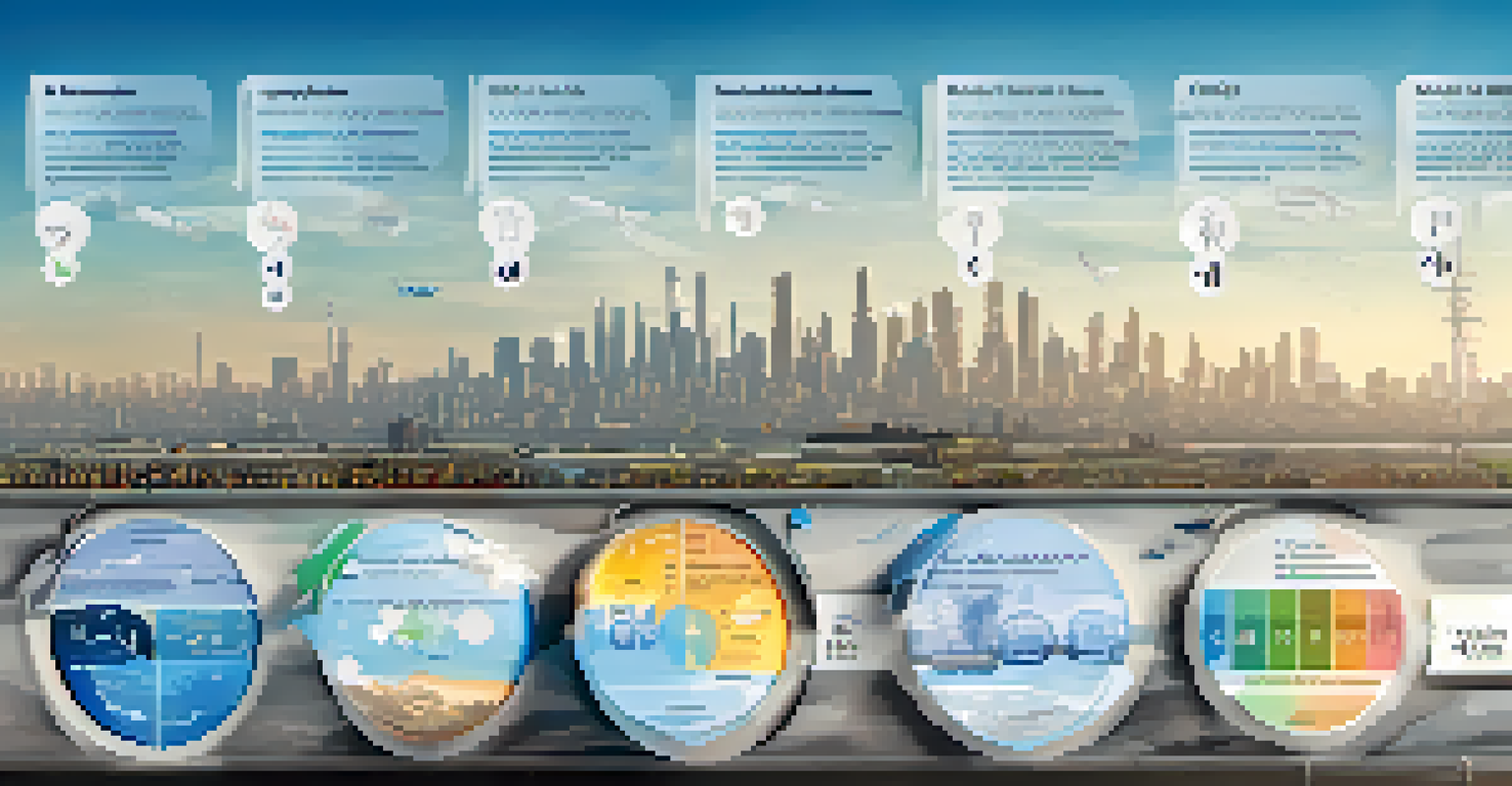Air Quality Index and Its Importance for Public Health

What Is the Air Quality Index (AQI) and How Is It Measured?
The Air Quality Index (AQI) is a tool used to communicate how polluted the air currently is or how polluted it is forecast to become. It breaks down air quality into a scale from 0 to 500, where lower values indicate cleaner air and higher values signify increasing levels of pollutants. The primary pollutants measured include particulate matter (PM10 and PM2.5), ground-level ozone, carbon monoxide, sulfur dioxide, and nitrogen dioxide.
The air we breathe is a vital part of our health and well-being.
Each pollutant has a specific concentration level that corresponds to a color-coded category, ranging from 'Good' (green) to 'Hazardous' (maroon). For instance, an AQI value of 50 or below is considered good, while a value above 300 can pose serious health risks. This categorization helps people understand the potential health effects of air quality on a given day.
Monitoring stations across various regions collect data on air pollutants, which is then used to calculate the AQI. This information is crucial for public health, as it guides individuals in making informed decisions about outdoor activities, especially for sensitive groups such as children, the elderly, and those with pre-existing health conditions.
The Connection Between AQI and Public Health Risks
Poor air quality has been linked to a range of health problems, including respiratory issues, cardiovascular diseases, and even premature death. When the AQI indicates unhealthy air, it serves as a warning for individuals to take precautions. For example, children playing outside or individuals with asthma may need to stay indoors when the AQI is elevated.

Studies have shown that long-term exposure to elevated levels of air pollution can lead to chronic health conditions. This connection emphasizes the importance of monitoring the AQI, as even short-term spikes can have immediate effects, such as increased hospital visits for asthma attacks or other respiratory issues.
Understanding the AQI Framework
The Air Quality Index (AQI) provides a clear scale from 0 to 500 to indicate air pollution levels and their potential health impacts.
By understanding the AQI and its health implications, communities can work together to reduce pollution sources and improve overall air quality. This proactive approach not only protects individual health but also enhances the wellbeing of the entire community.
Who Is Most Affected by Poor Air Quality?
Certain populations are more vulnerable to the effects of air pollution, including children, the elderly, and individuals with pre-existing health conditions like asthma or heart disease. Children are particularly at risk because their lungs are still developing, and they breathe in more air relative to their body weight compared to adults. This means they can absorb higher levels of harmful pollutants.
Clean air is a basic human right. It is essential for our health and our environment.
The elderly, on the other hand, often have weakened immune systems and may suffer from chronic illnesses that can be exacerbated by poor air quality. Moreover, individuals with respiratory or cardiovascular conditions may experience worsening symptoms during times of high pollution, making it crucial for them to stay informed about the AQI.
By targeting education and resources to these vulnerable groups, communities can reduce the health risks associated with poor air quality. Providing access to air quality information and support can empower these populations to take necessary precautions.
How to Access Real-Time AQI Data
Accessing real-time AQI data is easier than ever, thanks to various online platforms and mobile applications. Websites like AirNow and the Environmental Protection Agency (EPA) provide up-to-date information on air quality across different regions. Users can simply enter their location to find the current AQI and any health advisories related to air quality.
Mobile apps also offer convenient notifications, alerting users when air quality changes significantly. This can be especially useful for those planning outdoor activities or for individuals at higher risk due to health conditions. By staying informed, people can make safer choices regarding their time spent outdoors.
Health Risks from Poor Air Quality
Individuals, especially sensitive groups like children and the elderly, face serious health risks when the AQI indicates unhealthy air.
In addition to official sources, local news outlets often report on air quality indices, particularly during events that may cause pollution spikes, such as wildfires or industrial incidents. This information can help residents prepare for and respond to changes in air quality.
Precautions to Take During Poor Air Quality Days
On days when the AQI indicates unhealthy air quality, taking precautions is essential for protecting your health. Limiting outdoor activities, especially strenuous exercises, can significantly reduce your exposure to harmful pollutants. If you must go outside, try to do so during times when pollution levels are lower, such as early morning or late evening.
Using air purifiers indoors can also help mitigate the effects of poor outdoor air quality. These devices filter out harmful particles and allergens, improving the air you breathe at home. Additionally, keeping windows and doors closed during high pollution days can prevent outdoor air from infiltrating your living space.
Staying hydrated and maintaining a healthy diet can support your respiratory health during pollution spikes. Foods rich in antioxidants, like fruits and vegetables, can help your body combat some of the negative effects of air pollution.
The Role of Government and Organizations in Air Quality
Government agencies play a vital role in monitoring and regulating air quality to protect public health. Environmental protection agencies at local, state, and federal levels are responsible for setting air quality standards and enforcing regulations that limit emissions from industrial sources and vehicles. These efforts are crucial in reducing pollution and improving overall air quality.
In addition to government efforts, non-profit organizations often advocate for cleaner air and public awareness. They work to educate communities about the importance of the AQI and its health implications, pushing for changes in policies that can lead to improved air quality. By collaborating with local governments and communities, these organizations foster a collective effort toward healthier air.
Accessing Real-Time AQI Data
Real-time AQI data can be easily accessed through websites and mobile apps, helping people make informed decisions about outdoor activities.
Public awareness and activism can drive significant changes in air quality policies. When citizens demand cleaner air, it encourages governments and organizations to take action, making it essential for everyone to stay informed and engaged in air quality issues.
Future Directions for Improving Air Quality
Looking ahead, advances in technology and policy can play a significant role in improving air quality. For instance, innovations in renewable energy sources, such as solar and wind power, can help reduce dependency on fossil fuels and lower emissions. Transitioning to cleaner energy is a crucial step in addressing air pollution and its health impacts.
Additionally, urban planning that emphasizes green spaces and public transportation can contribute to better air quality. Cities designed with walkability, bike paths, and public transit options can reduce traffic congestion and lower vehicle emissions, leading to cleaner air for residents.

Public engagement and education will also be vital in the fight for better air quality. By raising awareness about the importance of air quality and encouraging community involvement, we can work together toward a healthier future. Every small effort counts, and collective action can lead to significant improvements.